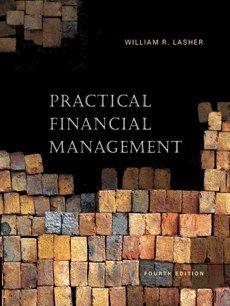Answered step by step
Verified Expert Solution
Question
1 Approved Answer
You work for a new startup that is trying to manufacture phones. You are tasked with building a model which will help determine how many
You work for a new startup that is trying to manufacture phones. You are tasked with building a model which will
help determine how many machines to invest in and how much to spend on marketing. Each machine produces
noutput phones per year. Each phone sells for $pphone and costs $cphone in variable costs to produce. After nlife
years, the machine can no longer produce output, but may be scrapped for $pscrap. The machine will not be
replaced, so you may end up with zero total output before your model time period ends. Equity investment is
limited so in each year you can spend cmachine to either buy a machine or buy advertisements. In the first year you
must buy a machine. Any other machine purchases must be made one after another advertising can only begin
after machine buying is done Demand for your phones starts at d Each time you advertise, demand increases
by gd The prevailing market interest rate is r
Notes
You may limit your model to years and a maximum of machines if it is helpful.
For simplicity, assume that cmachine is paid in every year, even after all machines have shut down.
Ensure that you can change the inputs and the outputs change as expected.
For simplicity, assume that fractional phones can be sold, you do not need to round the quantity transacted.
The Model
Inputs
noutput: Number of phones per machine per year
nmachines: Number of machines purchased
nlife: Number of years for which the machine produces phones
pphone: Price per phone
pscrap: Scrap value of machine
cmachine: Price per machine or advertising year
cphone: Variable cost per phone
d: Quantity of phones demanded in the first year
gd: Percentage growth in demand for each advertisement
r: Interest rate earned on investments
Outputs
Cash flows in each year, up to years". Ensure that you reference all inputs from the InputsOutputs tab.
Also ensure that all outputs are referenced back to the InputsOutputs tab. Do not change any locations of the
inputs or outputs.
The years should equal the following
Cash Flows:
Year : $
Year : $
Year : $
Year : $
Year : $
Year : $
Year : $
Year : $
Year : $
Year : $
Year : $
Year : $
Year : $
Year : $
Year : $
Year : $
Year : $
Year : $
Year : $
Year : $
NPV: $
MUST USE EXCEL TEMPLATE AND PROVIDE FORMULAS.

Step by Step Solution
There are 3 Steps involved in it
Step: 1
To build the required model lets break down the process into steps Step 1 Calculate Revenue and Cost...
Get Instant Access to Expert-Tailored Solutions
See step-by-step solutions with expert insights and AI powered tools for academic success
Step: 2

Step: 3

Ace Your Homework with AI
Get the answers you need in no time with our AI-driven, step-by-step assistance
Get Started


